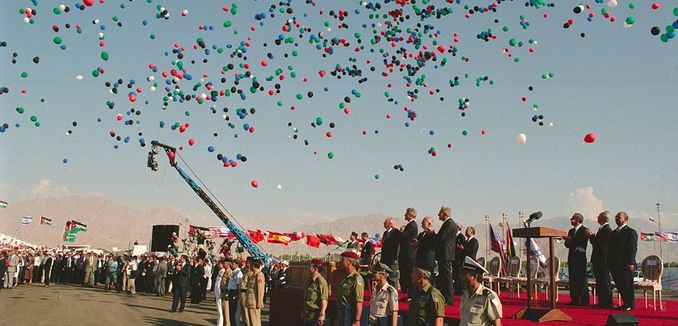Thursday, David Schenker of the Washington Institute for Near East Policy wrote an assessment of the twenty years of formal peace between Israel and Jordan. The treaty was signed October 26, 1994, twenty years ago today.
In short Schenker writes:
For Israel, the treaty was its second with an Arab neighbor and helped secure its long eastern frontier. Coming so close on the heels of the Oslo agreements with the Palestinians, it also raised the possibility of new relationships with other Arab states. For Jordan, the agreement facilitated a reorientation away from the radical pro-Saddam camp, opening up new sources of urgently needed economic and military assistance from the West. It also cemented the kingdom’s position in the roster of pro-Western Middle Eastern states. Today, the strategic relationship with Amman is Washington’s closest with an Arab partner.
Schenker outlined some of the gains achieved on account of the treaty including increases in bilateral trade and tourism as well as increased American aid to Jordan. Given the threat that the Islamic State of Iraq and Syria (ISIS) poses to Jordan and Israel, another benefit seems especially significant today:
Less publicized but equally important has been the emergence of an excellent defense and intelligence-sharing relationship. While little has been reliably published about it, intelligence sources from both countries say that the quality and depth of such cooperation is one of the treaty’s biggest achievements.
While Schenker that “the Israeli-Jordanian peace agreement is solid,” he acknowledges that “as with the 1978 Egyptian-Israeli treaty, the widespread ‘people to people’ ties promised … have not yet come to fruition” because Jordan’s “population does not uniformly appreciate the treaty.”
[Photo: Government Press Office / WikiCommons ]




